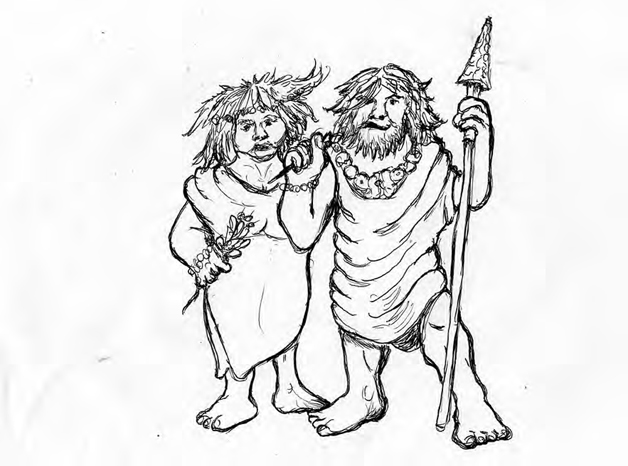Who were the first people?
By Richard W. Rogers
That was the question addressed by Captain Richard W. Rogers at the Waialua Library on April 14, the second Saturday of the month.
The first answer comes in Hawaiian tradition, chant and hula. The native genealogists traced over 30 generations from the mid-1800s to the time of Wakea and his wife Haumea. They were the propagators of the Hawaiian Race, and others as well. It was some twelve generations after them that the first Hawaiian place-name is mentioned, when a fellow named Kapawa was born at Kukaneloko. Other legends speak of man being created by the Hawaiian Gods, Ku, Kane and opposed by Kanaloa. Those traditions are consistent on placing the creation of the first man at Mokapu in Kaneohe.
The scholars mostly agree that the Polynesians came this way from the west and that they spent a long time in Tonga and Samoa before spreading to the Marquesas, Tahiti and on to Hawaii, Rapanui and New Zealand. The “Lapita” pottery they once made and their language can be traced back to Taiwan and some argue for an Arab or Jewish Genesis.
One popular theory was that the Pacific Islands are the mountain tips of a submirged continent of “Mu” (or Lemura), which was associated with Atlantis in the Atlantic. Thing is that the sea-level was indeed about 300’ lower at the time that humans were spreading from Asia into the Americas. While not the tips of continents, the islands of Oahu and Maui were much larger back then. Any people who settled here back then would have occupied lands that are underwater today.
Archaeology, anthropology, linguistics and DNA now all seem to agree that the Polynesian ancestors came out of Taiwan about 3000 years ago with relatively fine pottery. They got into Tonga about 1100 BC and Samoa just after that. While there, the quality of the pottery degraded. They made the Marquesas around 300 AD followed soon by Tahiti. The earliest artifacts in Hawaii date to after 1000AD and they are most like those from the Marquesas.
However, core samples in our own Ukoa Pond revealed that the fires started burning there in 800 AD with a very high carbon footprint by 1200 AD. Archaeologists also see evidence that rats ate the Luolo Palm seeds and killed off the Oahu forest around 1000 AD.
Current voyaging theory is that it took time to develop the large double-hulled voyaging canoes that would have been required to reach Hawaii, Rapanui and New Zealand. and that they brought the rats, pigs and many new crops…between 800 and 1000 AD.
However, many of the legends and traditions state that there were already people here when the voyagers arrived. They are called “Menehune” or “Mu”. While no archaeological evidence has been found, smaller outrigger type canoes could have sailed earlier, more into the wind and faster than the huge double-hulls. They would not have carried rats and pigs. Maybe they did not light fires either.



